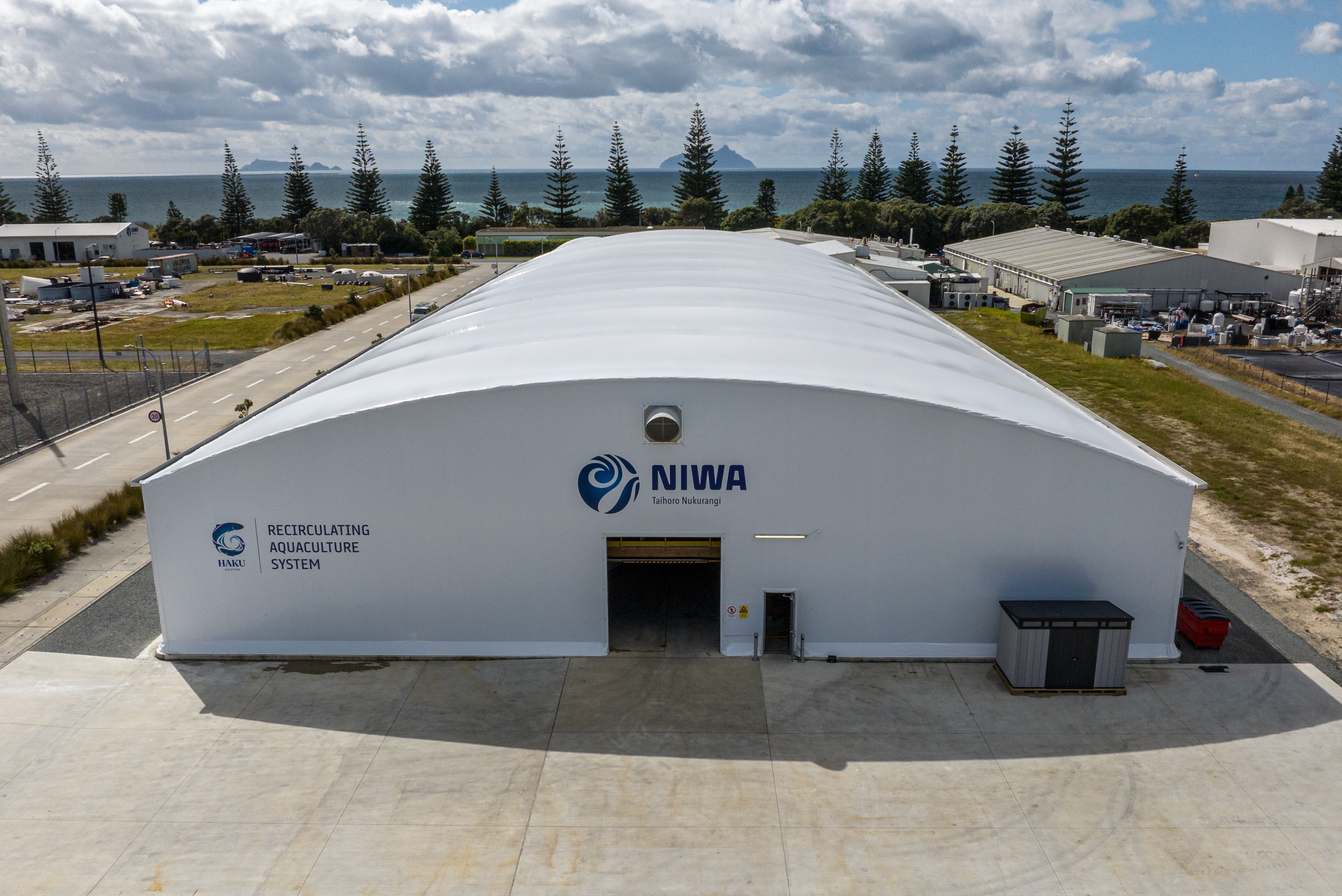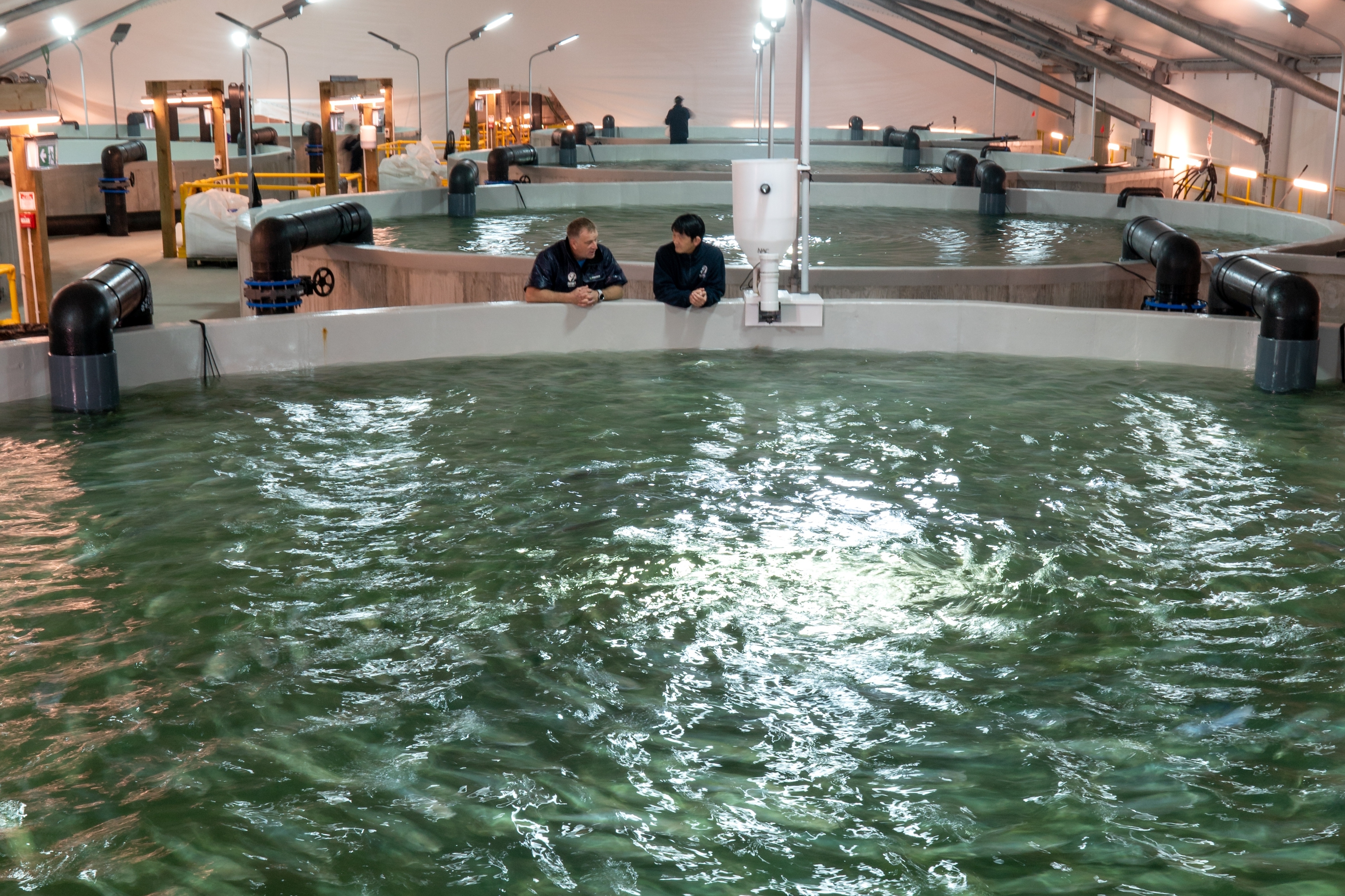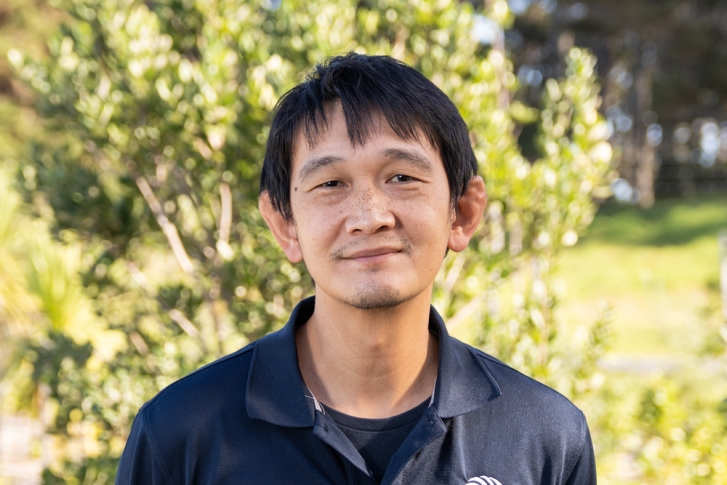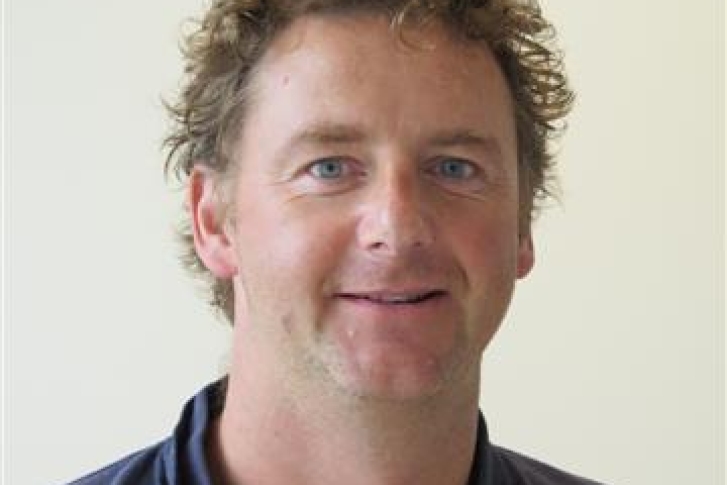New Zealand’s first commercial-scale recirculating aquaculture system (RAS) is the latest development at NIWA’s Northland Aquaculture Centre.
About our RAS
Overview
NIWA’s Northland Aquaculture Centre is a fully equipped facility focused on growing the aquaculture industry through the development of high value products of verifiable quality and sustainability.
Over the course of 20 years, we have perfected the consistent, economic production of finfish that meets the highest environmental and quality certification standards. The RAS is designed to demonstrate the viability of commercial-scale production of high-quality finfish
Advantages of using RAS
Recirculating aquaculture systems (RAS) are a land-based production technology for aquatic organisms and high-value finfish.
They have many advantages:
- Reduced water requirements with 95 to 98 percent of the water is cleaned and reticulated through the system.
- Production Control. Water can be heated/cooled, high oxygen can be maintained, pH adjusted, pathogens treated, and waste products removed to maximise health, growth rates, and the welfare of the stock.
- Increase in long-term production. Stock are unaffected by seasonality, periodic disease events and adverse weather, allowing continuous and reliable production.
- Reduced environmental footprint. Waste streams are treated and recycled to ensure they have the least impact on the environment as possible. Being land-based, there is also no risk of fish escaping and interbreeding with wild populations.
- Flexible design. The system can easily be customised for different species, locations and consumer preferences.
Animal welfare
As a Crown Research Institute, NIWA is committed to animal welfare best-practice in the industry and has a strict code of Animal Ethics for the research and development of aquaculture species. We conduct specific research on fish health and welfare, such as disease treatment, stress physiology and water conditions, to ensure the best growing conditions at our facilities.
Production processes further support the welfare of our kingfish.
Our water quality is continuously monitored, we maintain optimum stocking densities and our fish are fed a wholesome, nutritionally complete feed. We are only use grower feed from certified sources that have a continued interest in sustainability and research on more efficient specialised diets. Currently, our main supplier of feed is BioMar in Tasmania
Our expertise
Our commercial-scale RAS is supported by the extensive facilities and expertise at NIWA’s Northland Aquaculture Centre.
- Decades of experience in systems design, genetics, nutrition, new species development, prevention and treatment ofdisease, handling and harvesting, nutrition, reproduction andphysiology.
- In-house live-feed cultures (rotifers and artemia), algal culture facilities, diagnostic and analytical facilities.
- Multi-species experience – including kingfish, hapuku, salmon, paua, greenshell mussels and oysters.
Our Support
Haku kingfish
Learn more about the fish that chefs and patrons are talking about here



Other RAS units
Overview
The Northland Aquaculture Centre has two RAS designed for experimental programs that test the effects of RAS conditions on fish performance, or the effects of biological inputs on RAS performance. The treatment components of the RAS are designed to be flexible so that new technologies, and different combinations of technologies can be tested (biofilters, drum filters, degassers, foam fractionators etc.). Both RAS are designed to allow for the simultaneous measurement of fish performance, whole-system performance, individual component performance and water quality parameters while maintaining precise temperature control water quality parameters.
Beyond applied research, these systems are ideal for testing or ground-truthing of products (e.g., commercial diet, novel RAS component, breeding values) or methods (e.g., novel rearing protocol).
RAS unit 1
Six x 5m3 tanks with direct oxygen injection, automated feeders and feed recovery for each tank. The system is capable of being setup in a multitude of different configurations. Filtration components can be plugged in at any stage, making the comparison of different known technologies to be easily undertaken alongside the new innovations being developed at the NAC. Energy inputs and waste outputs can be quantified at different locations allowing differences in efficiencies and performance to be measured in real time. Temperature, photoperiod, pH, O2 saturation, water flow rate, feed rates, meal times and stocking density are a few of the various parameters that can be manipulated and tested side by side.
- 6 × 5000 Litre tanks capable of rearing a variety of finfish species, at different sizes and at high stocking densities.
- Tanks can be stocked up to 100kg/m³ = 500kg/tank= 3000kg for the unit
- Connecting RAS systems capable of being split into 2 identical units
- Ability to run both freshwater and seawater.
- Capability to run tanks at various turnover rates up to 20min refresh
- Capability to run at various system refresh rates
- Flexibility to run various trials, using different water treatment methods and system/tank/water flow configurations
RAS unit 2
Three side by side systems consisting of 2 × 25m³ tanks per system. Many of the same capabilities are built into the second unit but with 3 larger scale replicate systems. Many of the lessons learn in the smaller RAS have been built into this unit as a standard. The lager tanks give a more commercial like environment, allowing trials to be more focused on the anticipated challenges that will come with full commercial production. The 3 replicate systems ensures that multiple variations in systems setup and husbandry techniques can be explored and measured. Energy efficiency, waste capture, and production cost reduction can be explored on a larger and therefore more realistic scale. Economic gains from technological innovation at the NAC can be demonstrated, quantified and tested against other more traditional rearing practices. Improvements in waste capture and environmental impact can also be tested and shown in real life.
- 6 × 2500L tanks capable of rearing a variety of finfish species, at different sizes and at high stocking densities.
- 3 × connecting RAS systems capable of supplying 2 tanks per system.
- Tanks can be stocked up to 100kg/m³ = 2500kg/tank = 15000kg for the unit
- Ability to run both freshwater and seawater.
- Capability to run tanks at various turnover rates up to a 15min refresh
- Capability to run at various system refresh rates
- Flexibility to run various trials, using different water treatment methods and system/tank/water flow configurations



